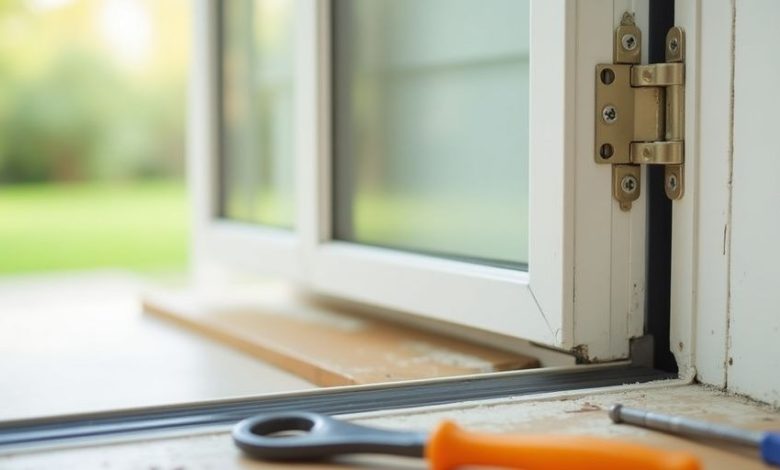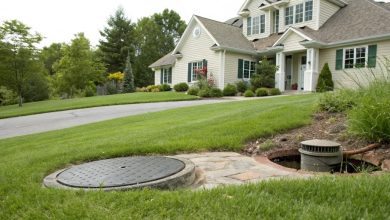Storm Door Sagging? Here’s How to Fix It Without Replacing It

A sagging storm door can be frustrating and embarrassing for any homeowner. The door may drag on the threshold, refuse to close properly, or create unsightly gaps that let in drafts and insects. Fortunately, most sagging storm door issues can be resolved without expensive replacement costs. The experts at Vincent James Homes have helped countless homeowners tackle this common problem with simple, effective solutions.
Storm doors typically sag due to worn hinges, loose screws, or frame settling over time. However, these issues are often easier to fix than many homeowners realize. Understanding the root cause of your door’s sagging problem is the first step toward finding the right solution. Additionally, how to fix a sagging storm door involves techniques that most DIY enthusiasts can handle with basic tools and patience.
Most storm door repairs can be completed in under two hours using common household tools. Therefore, addressing the problem quickly prevents further damage and saves money in the long run.
Common Causes of Storm Door Sagging
Several factors contribute to storm door sagging problems. Weather exposure ranks as the primary culprit, as constant temperature changes cause materials to expand and contract. This movement gradually loosens screws and weakens hinge connections over time.
Heavy usage also accelerates wear and tear on storm door components. Families with children or pets often experience faster deterioration due to frequent opening and closing. Furthermore, inadequate initial installation can create premature sagging issues that worsen with normal use.
Moisture infiltration presents another significant challenge for storm door integrity. Water damage can warp the door frame or cause metal components to rust and weaken. Additionally, settling foundations can shift the entire door frame, creating alignment problems that manifest as sagging.
Essential Tools and Materials Needed
Before starting your repair project, gather the necessary tools and materials. Most homeowners already have these items in their toolbox, making this an affordable DIY project.
You will need a drill with various bit sizes, a screwdriver set, and a level for proper alignment. A measuring tape helps ensure accurate adjustments, while a pencil marks important reference points. Additionally, having a helper makes the job easier and safer.
Material requirements include replacement screws that are longer than the originals, typically 2.5 to 3 inches long. Wood shims help adjust alignment issues, while weatherstrip adhesive seals gaps after repairs. Therefore, purchasing these inexpensive items before starting prevents mid-project delays.

Step-by-Step Repair Process
Diagnosing the Problem
Start by examining your storm door carefully to identify the specific sagging pattern. Open and close the door several times, noting where it sticks or binds. However, avoid forcing the door, as this can cause additional damage.
Check all hinge screws for looseness by gently trying to turn them with your fingers. Loose screws often indicate the primary problem area. Additionally, inspect the door frame for visible warping or damage that might contribute to alignment issues.
Use a level to check both the door and frame for proper alignment. Mark any areas where significant gaps appear between the door and frame. Therefore, this initial assessment guides your repair strategy and prevents unnecessary work.
Tightening and Replacing Screws
Begin repairs by tightening all existing screws in the hinges and door frame. Use a screwdriver rather than a drill for this step to avoid over-tightening. However, if screws continue to loosen or strip out, replacement becomes necessary.
Remove old screws completely and examine the holes for damage. Stripped screw holes require longer screws that can bite into fresh wood or metal. Additionally, applying a small amount of thread-locking compound helps prevent future loosening.
Install new screws gradually, checking door alignment after each adjustment. Therefore, this methodical approach prevents over-correction and ensures optimal results.
Adjusting Hinge Alignment
Hinge adjustment often resolves persistent sagging problems when screw tightening fails. Start by examining the gap between the door and frame along the entire perimeter. Uneven gaps indicate hinge alignment issues that require correction.
Loosen the hinge screws slightly and adjust the hinge position to create uniform gaps. Use wooden shims behind hinges if necessary to achieve proper alignment. However, avoid using too many shims, as this can create instability.
Tighten screws gradually while checking alignment frequently. Additionally, test the door operation after each adjustment to ensure smooth function. Therefore, patience during this process yields the best long-term results.
Reinforcing the Door Frame
Weak door frames often contribute to recurring sagging problems. Inspect the frame for loose joints or damaged areas that need reinforcement. However, major structural damage may require professional assessment.
Add metal brackets or corner braces to strengthen weak frame joints. These inexpensive hardware pieces provide significant structural improvement. Additionally, applying construction adhesive to loose joints creates additional stability.
Check that the door frame remains square after reinforcement work. Therefore, this extra step prevents future sagging issues and extends the repair lifespan.
Preventive Maintenance Tips
Regular maintenance prevents most storm door sagging problems before they develop. Schedule quarterly inspections to check screw tightness and hinge condition. However, avoid over-tightening screws, as this can strip threads and cause damage.
Lubricate hinges annually with appropriate lubricants designed for outdoor use. Clean debris from tracks and weatherstripping to ensure smooth operation. Additionally, touch up paint scratches promptly to prevent rust and corrosion.
Adjust door closers seasonally to account for temperature-related expansion and contraction. Therefore, proactive maintenance saves time and money while extending door lifespan significantly.
When to Call a Professional
Some storm door problems exceed typical DIY capabilities and require professional intervention. Extensive frame damage, major structural issues, or complex alignment problems often need expert assessment. However, most homeowners can handle basic sagging repairs successfully.
Consider professional help if your initial repair attempts fail to resolve the problem. Additionally, homes with settling foundations may need structural evaluation before door repairs prove effective. Safety concerns should always take precedence over cost savings.
Professional installation may be worthwhile when replacing multiple storm doors simultaneously. Therefore, evaluate your specific situation carefully before deciding between DIY and professional repair options.
Conclusion
Fixing a sagging storm door requires patience, basic tools, and systematic troubleshooting. Most problems stem from loose screws, worn hinges, or minor alignment issues that homeowners can address successfully. However, proper diagnosis and methodical repairs ensure lasting results.
Regular maintenance prevents most sagging problems from developing in the first place. Additionally, addressing issues promptly prevents minor problems from becoming major repairs. Therefore, investing time in storm door maintenance protects your home investment while ensuring proper function and appearance.
Remember that professional help remains available for complex problems beyond DIY capabilities. However, most storm door sagging issues respond well to the simple repair techniques outlined in this guide.
Read More Also: How to Use AI for Competitive Analysis in a Local Market
Frequently Asked Questions
How long does it typically take to fix a sagging storm door?
Most storm door repairs take between one to two hours, depending on the severity of the problem. Simple screw tightening can be completed in 30 minutes, while hinge adjustments and frame reinforcement may require additional time. However, having all tools and materials ready before starting speeds up the process significantly.
Can I fix a sagging storm door without removing it completely?
Yes, most sagging storm door repairs can be completed while the door remains installed. Tightening screws, adjusting hinges, and minor alignment corrections rarely require door removal. However, extensive frame repairs or hinge replacement may necessitate temporary door removal for easier access.
What size screws should I use to replace stripped hinge screws?
Replace stripped screws with ones that are 1/2 to 1 inch longer than the originals, typically 2.5 to 3 inches long. The increased length allows screws to bite into fresh material beyond the stripped area. Additionally, choose screws with the same thread pattern and head type as the originals for proper fit.
How do I know if my storm door frame needs professional repair?
Professional repair becomes necessary when the frame shows significant warping, structural damage, or separation at joints. Additionally, if your DIY repair attempts fail to resolve the sagging problem, expert assessment may reveal underlying issues. However, minor frame adjustments and reinforcement typically fall within DIY capabilities.
Will weather stripping replacement help with door sagging issues?
Weather stripping replacement addresses sealing problems but does not fix structural sagging issues. However, new weather stripping can help compensate for minor alignment problems by filling small gaps. Additionally, proper weather stripping reduces stress on door components by improving seal efficiency and reducing drafts.

